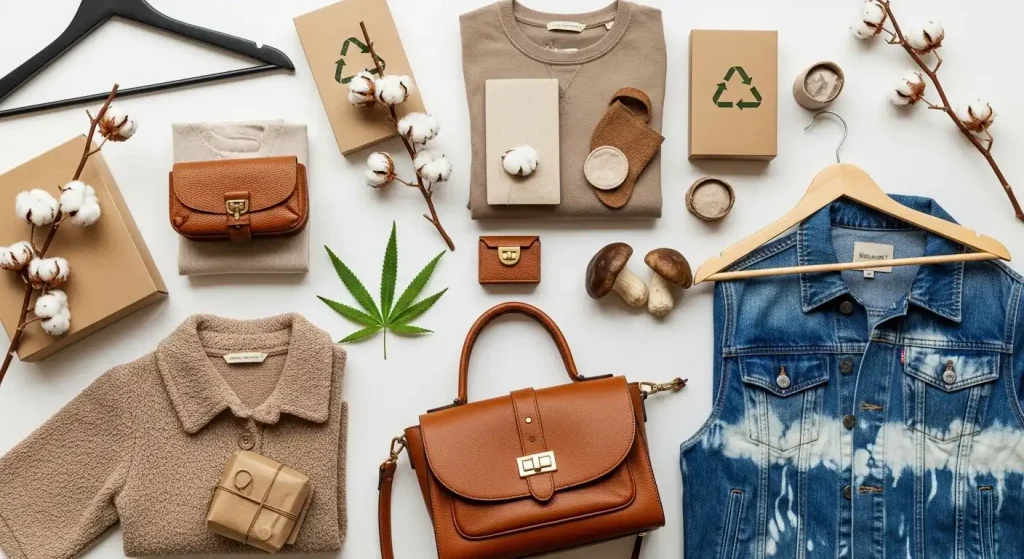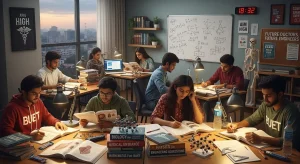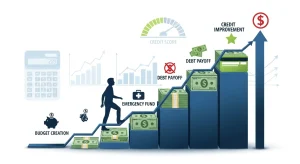The fashion industry is undergoing a revolutionary transformation in 2025, with sustainable fashion taking center stage as consumers become increasingly conscious of their environmental impact. The $1.7 trillion industry’s sustainability professionals are in a bind, but innovative brands are rising to meet the challenge with groundbreaking eco-friendly approaches that don’t compromise on style.
This year marks a pivotal moment where sustainable fashion is no longer a niche market but a mainstream movement. From circular fashion models to breakthrough innovations in eco-friendly materials, the industry is proving that ethical fashion can be both accessible and desirable. Whether you’re a conscious consumer looking to build a more sustainable wardrobe or a fashion enthusiast curious about the latest green trends, these 10 sustainable fashion trends will guide your style choices in 2025.
The Complete Guide to Remote Work & Home Office Gear
1. Circular Fashion: Revolutionizing the Fashion Lifecycle
Circular fashion, the industry’s answer to overconsumption, is all about keeping clothing in rotation for as long as possible. This sustainable fashion approach focuses on closing the loop in fashion production and consumption by designing out waste and maximizing the use of resources.
Key elements of circular fashion include:
- Take-back programs where brands reclaim old garments for recycling
- Resale platforms that extend the life of clothing items
- Repair services that restore damaged pieces instead of discarding them
- Modular designs that allow pieces to be updated or reconfigured
In 2025, expect brands to double down on recycled materials and designs built to last. This shift represents a fundamental change from the traditional linear “take-make-dispose” model to a sustainable system that prioritizes longevity and resource efficiency.
2. Innovative Bio-Fabricated Materials Transform Eco-Friendly Clothing
Cutting-edge innovations, including bio-fabricated materials grown in labs, are transforming how clothes are made. The sustainable fashion industry is embracing revolutionary materials that challenge traditional textile production methods.
Plant-Based Leather Alternatives
Designers are getting more creative with sustainable materials, including bags made of pineapple leather and mushroom leather becoming mainstream. These innovations include:
- Mushroom leather (Mycelium) – Grown from mushroom roots
- Pineapple leather (Piñatex) – Made from pineapple leaf waste
- Apple leather – Created from apple industry byproducts
- Cactus leather – Derived from prickly pear cactus
Lab-Grown Fabrics
Bio-fabricated textiles represent the future of sustainable materials, offering identical properties to conventional fabrics while eliminating environmental impact associated with traditional production methods.
3. Organic Cotton and Hemp Lead Sustainable Textiles
To counter waste caused by fast fashion, more sustainable fabrics include organic cotton, linen, hemp, and Fashion brands are switching to natural organic fabrics and environmentally friendly materials. These natural fibers form the foundation of eco-friendly clothing in 2025.
Benefits of organic and natural fibers:
- Reduced pesticide use compared to conventional cotton
- Lower water consumption in production
- Biodegradable and compostable end-of-life options
- Improved soil health through sustainable farming practices
Hemp, in particular, is gaining recognition as a versatile sustainable material that requires minimal water and actually improves soil quality while growing.
Wearable Gadgets 2025: Smart Rings & Glasses Revolution
4. Upcycled Fashion and DIY Customization Trends
With vintage denim remixes, patchwork, upcycled accessories, DIY customization on the rise, there’s no shortage of stylish options for the environmentally conscious fashionista. Upcycling transforms waste materials into higher-value products, making it a cornerstone of sustainable fashion.
Popular upcycling trends for 2025:
- Vintage denim reconstruction into new silhouettes
- Patchwork designs combining different fabric scraps
- Embellishment addition to refresh existing pieces
- Size and fit modifications to extend garment life
- Color transformation through natural dyeing methods
This trend empowers consumers to become part of the sustainable fashion movement while expressing their creativity and personal style.
5. Slow Fashion Movement Gains Momentum
The slow fashion movement continues to challenge fast fashion by promoting quality over quantity. This ethical fashion approach emphasizes:
- Timeless designs that transcend seasonal trends
- Quality construction for longevity
- Transparent supply chains ensuring fair labor practices
- Local production to reduce transportation emissions
- Mindful consumption encouraging thoughtful purchasing decisions
Slow fashion brands focus on creating versatile pieces that can be styled multiple ways, reducing the need for frequent wardrobe updates while maintaining style relevance.
6. Rental and Subscription Services Reshape Fashion Consumption
Fashion rental services are revolutionizing how consumers access high-quality, designer pieces without the environmental cost of ownership. Whether it’s renting a dress for a big event or supporting brands that care about transparency, there are many ways to join the movement.
Types of sustainable fashion services:
- Event wear rentals for special occasions
- Everyday clothing subscriptions for regular wardrobe rotation
- Designer piece access at a fraction of purchase price
- Try-before-you-buy programs reducing returns and waste
These services make luxury and sustainable fashion more accessible while significantly reducing the environmental impact of fashion consumption.
7. Zero-Waste Design Philosophy Minimizes Production Impact
Zero-waste design represents a revolutionary approach to pattern making and garment construction that eliminates fabric waste during production. This sustainable fashion technique involves:
- Geometric pattern pieces that fit together like puzzle pieces
- Modular construction allowing multiple styling options
- Fabric scrap utilization for accessories and trims
- Mathematical precision in cutting to minimize waste
Designers embracing zero-waste principles prove that environmental consciousness and aesthetic appeal can coexist beautifully in modern fashion.
AR/VR Headsets 2025: Ultimate Guide to Virtual Experiences
8. Technology Integration for Supply Chain Transparency
Blockchain technology and digital tracking systems are revolutionizing transparency in sustainable fashion. These innovations allow consumers to:
- Trace garment origins from fiber to finished product
- Verify sustainability claims through immutable records
- Understand labor practices throughout the supply chain
- Calculate environmental impact of individual purchases
This technological integration builds trust between eco-friendly clothing brands and conscious consumers while holding companies accountable for their sustainability commitments.
9. Natural Dyeing and Chemical-Free Processes
The shift toward natural dyeing methods represents a significant trend in sustainable fashion, eliminating harmful chemicals traditionally used in textile coloring. Natural dye sources include:
- Plant-based materials like turmeric, indigo, and madder root
- Fruit and vegetable waste creating beautiful color variations
- Mineral deposits for earth-tone palettes
- Bacterial fermentation for innovative color development
These processes not only reduce environmental impact but also create unique, variable colorations that add character and individuality to sustainable garments.
10. Gender-Neutral and Timeless Design Aesthetics
Sustainable fashion increasingly embraces gender-neutral designs that maximize versatility and longevity. This approach includes:
- Unisex silhouettes that work for all body types
- Classic proportions that remain stylish across decades
- Neutral color palettes that coordinate easily
- Functional details that serve practical purposes
- Quality basics that form the foundation of sustainable wardrobes
By creating pieces that transcend gender boundaries and trend cycles, designers are promoting a more inclusive and environmentally conscious approach to fashion.
Smart Home Essentials 2025: Complete Guide to Hubs, Sensors & Matter
Building Your Sustainable Wardrobe: Implementation Strategies
Creating a sustainable wardrobe requires strategic planning and mindful decision-making. Consider these approaches:
Quality Assessment Criteria
- Fabric composition and durability
- Construction quality and finishing details
- Brand transparency and ethical practices
- Versatility and styling potential
- Care instructions and maintenance requirements
Investment Prioritization
Focus your sustainable fashion budget on:
- Core basics that form your wardrobe foundation
- Statement pieces that reflect your personal style
- Seasonal essentials for climate-appropriate dressing
- Special occasion items through rental or investment pieces
FAQs About Sustainable Fashion Trends in 2025
What makes fashion sustainable in 2025?
Sustainable fashion in 2025 focuses on circular fashion models, eco-friendly materials like organic cotton and bio-fabricated textiles, ethical labor practices, and transparent supply chains. Key elements include reduced environmental impact, fair wages for workers, and designs that prioritize longevity over fast fashion trends. The emphasis is on creating clothing that benefits both people and the planet.
How can I identify truly sustainable fashion brands?
Look for brands that provide transparency about their supply chain, use certified organic or recycled materials, implement fair labor practices, and participate in circular fashion initiatives like take-back programs. Genuine sustainable fashion brands often have third-party certifications, publish sustainability reports, and demonstrate measurable environmental and social impact. Be wary of greenwashing and research brands’ actual practices beyond marketing claims.
Building an Emergency Fund: Your Complete Guide to Financial Security in 2025
Are sustainable fashion trends more expensive than conventional clothing?
While sustainable fashion often requires a higher initial investment, the cost-per-wear is typically lower due to superior quality and durability. Eco-friendly clothing is designed to last longer, reducing the need for frequent replacements. Additionally, circular fashion options like rental services, resale platforms, and upcycling make sustainable style more accessible. Consider it an investment in both your wardrobe and environmental impact.
What are the most important sustainable materials to look for in 2025?
The most important sustainable materials include organic cotton, hemp, linen, recycled polyester, and innovative bio-fabricated materials like mushroom leather and lab-grown fabrics. These materials offer reduced environmental impact compared to conventional textiles. Look for certifications like GOTS (Global Organic Textile Standard) for organic materials and recycled content verification for recycled fibers to ensure authenticity.
Join the Sustainable Fashion Revolution
The sustainable fashion movement in 2025 offers unprecedented opportunities to align your personal style with your environmental values. By embracing these trends, you’re not just making a fashion statement—you’re contributing to a more sustainable future for the fashion industry and our planet.
Ready to transform your wardrobe with sustainable fashion pieces? Explore our curated collection of eco-friendly clothing from leading sustainable brands that prioritize both style and environmental responsibility.
Second-Hand & Upcycled Fashion (FREE):
to discover high-quality, ethically-made fashion that reflects the latest sustainable trends while supporting responsible manufacturing practices.











